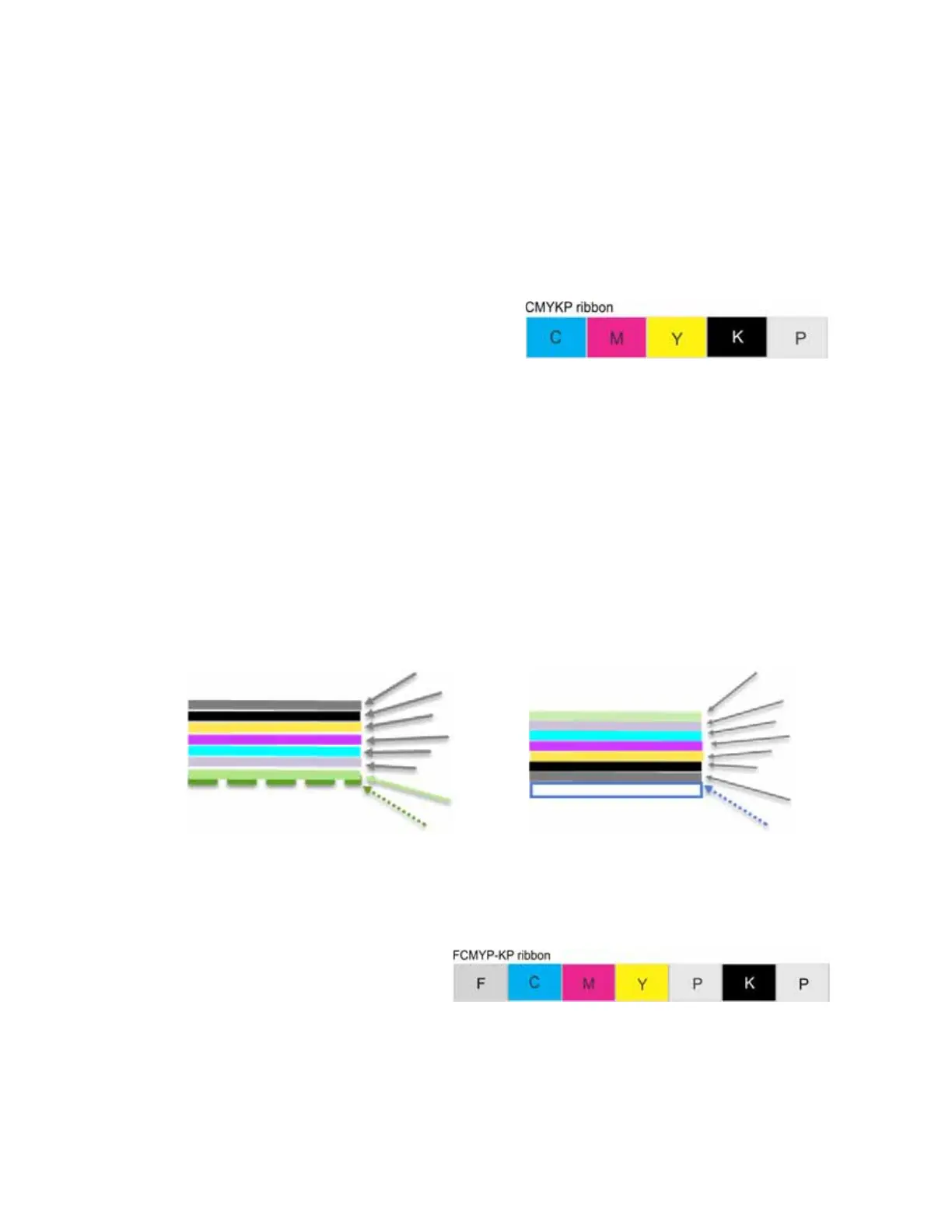44 Elements of Card Design
Printing Design
Printing design includes color and monochrome printing, bar code printing, non-printing areas,
and card layout.
Color Printing
The retransfer printing process uses two types of
supply: a color pigment ink ribbon and a
retransfer film. The color ink ribbon typically
contains the following panels, C (cyan), M
(magenta), Y (yellow), K (black), and P (primer). Other ribbon types also may have an ultraviolet
(F) panel or an inhibitor (I) panel.
The printer prints separate layers of cyan, magenta, yellow, black, and primer on a transparent
retransfer material. Heat from the printhead causes the ink pigment to release from the ribbon
and adhere to the retransfer material. The printed images are then transferred to the card using a
heated roller.
The layers are applied to the card in the reverse order that they were applied to the retransfer
film. The primer, which is applied last to the retransfer film, is applied first to the card and allows
the image layers to bond to the card surface. The retransfer film consists of a carrier material and
a film coating. The coating is applied last to the card and acts as a protective layer for the printing.
You can select to apply a second layer of the retransfer film coating for added durability.
If the printer includes the optional laminator, the patch overlay applied by the laminators
provides additional protection against wear.
Color ink ribbons with an ultraviolet
F (fluorescent) panel, FCMYP-KP, also
are available. The UV printing is
undetectable under normal lighting
and provides an additional form of
security.
Primer
K
Y
M
C
UV
Film Coating
Retransfer Film
Carrier Material
Print Order on Retransfer Film
Order on Card
Film Coating
UV
C
M
Y
K
Primer
Card
{
{
Ribbon
Retransfer
Film

